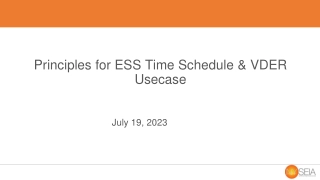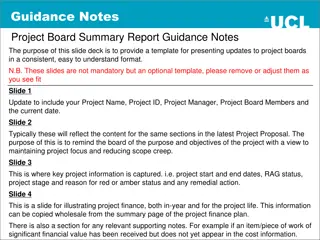
Node Power Allocation and Interoperability Guidelines
This SPMD use case template outlines the specifications for supported nodes on a segment, cable lengths, power requirements, voltage limits, and interoperability options. It helps in designing efficient systems with clear power allocation guidelines and compatibility standards. Explore this detailed guide for implementing optimal node configurations and connection protocols.
Download Presentation

Please find below an Image/Link to download the presentation.
The content on the website is provided AS IS for your information and personal use only. It may not be sold, licensed, or shared on other websites without obtaining consent from the author. If you encounter any issues during the download, it is possible that the publisher has removed the file from their server.
You are allowed to download the files provided on this website for personal or commercial use, subject to the condition that they are used lawfully. All files are the property of their respective owners.
The content on the website is provided AS IS for your information and personal use only. It may not be sold, licensed, or shared on other websites without obtaining consent from the author.
E N D
Presentation Transcript
Usecase: <TITLE> Item Min Value Desired value Extra information Supported nodes on one mixing segment Minimum supported cable length Acceptable cable gauges Required power for a node Required initial power allocation 60V voltage OK ? Interoperability level for the application Pass through or T connection Hotpluggability Possible market (in #nodes/year) 2 Presentation: <URL>
Item Description Supported nodes on one mixing segment Indicate the numbers of nodes on a single mixing segment. The minimum reflects the number of nodes needed for the usecase to make sense. The desired value represents a natural fit for the application. Both numbers could be the same. Is the length you need between the two furthest nodes on the mixing segment. Minimum supported cable length What cable gauges can be accepted for the application (consider cost, size, bend radius, ) Acceptable cable gauges How much power is needed in the node to run the application. This is the power level as measured at the connector of the device. Note that there may be a rectifier or other elements that cause some loss (2% to 5% typical). Required power for a node Is it acceptable for the input voltage to be up to 60V ? If not, what is the reason ? 60V voltage OK ? Because this is a bus powered system, a node needs to be permitted to draw some amount of power after being plugged in. This power is used to communicate with the PSE about the power requirements. The system should be able to operate it s PHY with this power. How much power do you foresee to need for this. This is different from the Required power for a node which is about the complete power need of the device. Required initial power allocation Interoperability level for the application Choose between plug&play or engineered system. Plug & play means that a compliant device works when connected to a network of other compliant devices. There is no need for configuration or to verify if devices will be compatible or not. Engineered system means that you will use the standard within your own products or that the end user can determine which devices will work in the system. See slide 4-6 of http://grouper.ieee.org/groups/802/3/SPMD/public/sep19/spmd_cjones_01_0919.pdf If the application cannot be equipped with two connectors, select T connection. If it must be possible to live connect a new node without disconnecting other nodes, also select T connection. Pass through or T connection Hotpluggability Should it be supported to connect new devices while the bus is powered and guaranteed that this does not cause devices to be interrupted (eg. Reboot, lose long stretches of data). If not required, select no. Potential market expressed in number of nodes. Do not express this in currency of any kind due to IEEE SA rules. Possible market size






















